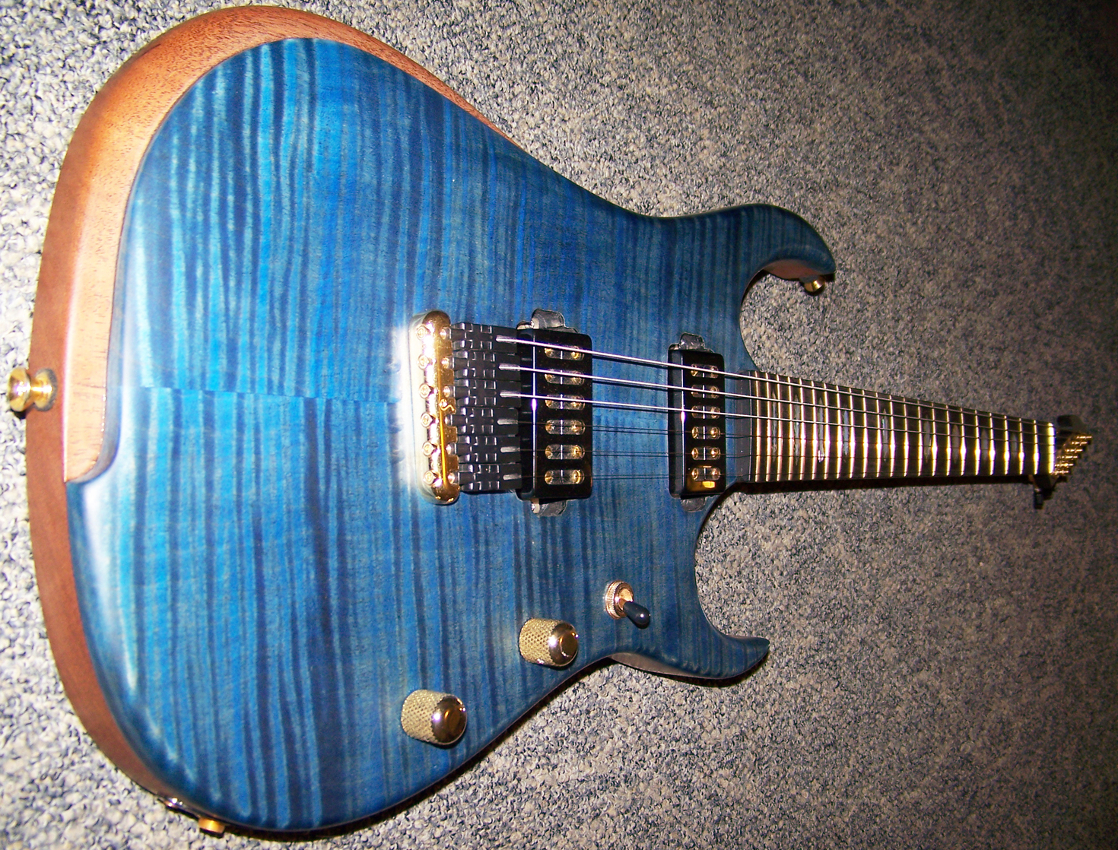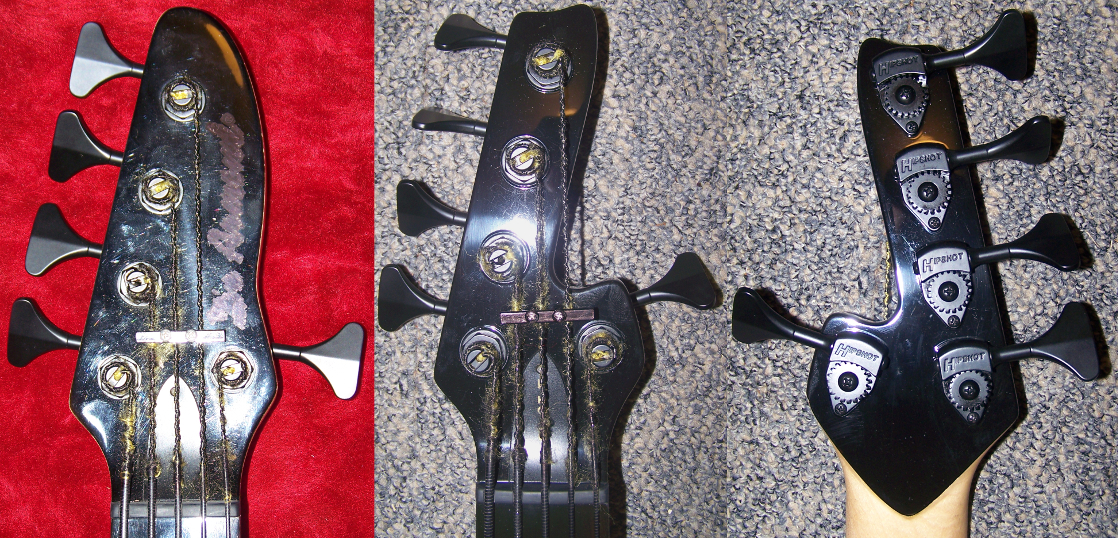About custom finishing:
Every once in a while someone asks me to do a custom finish on their instrument, and although I would love to be able to take on those kind of jobs, I can not always do that. I still don't have the proper equipment for some finishes, and finishing can be difficult even with the right equipment. Even more so when someone wants artwork to top it off, I may have to decline. Although I am a good graphic artist, I am not a highly talented airbrush artist who can put a landscape with people and maybe a dragon on your guitar or bass, and even the wonderful local artist you have found may not be skilled with the media required for such jobs, unless you are willing to have a finish that may not live up to the abuse it may be subjected to, or can not be smoothed like most guitar finishes are.
For the most part I have worked in oil finishes, mostly clear and in vintage amber tones that let the wood show its natural beauty. Oil is hands down the best finish for the back of necks, as it is not sticky feeling and adds considerably to the playability of the instrument. I have also dyed the wood first to add some color, and this guitar is one I just refinished more recently:

Making the clean transition between the blue maple top and the mahogany body was extremely difficult, because unlike paints, dye soaks in and likes to spread out, even when taped off, it can not be controlled well. Of course I managed better than the original builder as you can see below, his work was in forest green, mine is in blue:

I will be experimenting with other colors, bursts and shading with dyes too, but you will have to wait a while until I have it down and publish more here.
I can also work in lacquer, both nitrocellulose and acrylic, and in polyurethane too but since I do not have spray equipment yet, I am limited to colors that are available in spray cans, wiped on or brushed, which require much more sanding and polishing to look good. There are solid as well as translucent colors to be had, but I do not recommend sparkle and other effects with these techniques as they never turn out well, no matter how much their manufacturers will have you believe they will.
Here is a headstock that I reshaped, after stripping the whole neck I refinished the back of the neck in oil, and lacquered the headstock black, and sculpted a pleasant transition between them.

When it comes to lacquer and polyurethane, I am also at the mercy of atmospheric conditions, and can not control drying and curing times, and therefore can not put deadlines on those finishes, and you may have to wait a long time depending on conditions.
For now, all I can say is that I am working on it, so as I progress, add new tools, techniques and processes I will update these pages. Of course I will publish pictures of the results here too, and I need to do a better job of that than in the past too, as so far every speck of dust and fingerprint shows up in the high resolution pictures I take, even though they are not always apparent while taking them.
Stay tuned though as there will be more to come here on the subject, and changes to these writings will occur accordingly.